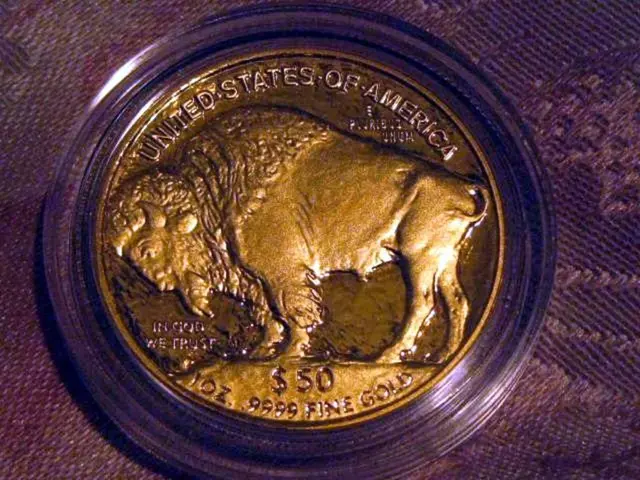Deep-Sea Mining Dispute in Global Waters: A Complex Matter of Legislation and Ownership
Deep-Sea Mining Regulations: A Tense Balance Between Progress and Caution
The world is on the brink of a new era in mining, as the focus shifts from land to the deep ocean floor. The International Seabed Authority (ISA), an international body established under the United Nations Convention on the Law of the Sea (UNCLOS), is tasked with regulating this new frontier.
Currently, the ISA is finalizing the Draft Exploitation Regulations, a "mining code" that would govern commercial deep-sea mining activities in international waters. However, progress is slow, and key provisions, particularly those related to protecting the marine environment, remain contentious.
Some member states are advocating for a moratorium or precautionary pause on exploitation until the regulations are firmly agreed upon. This call for caution stems from fears that stirring up the seabed during deep-sea mining could smother life forms, disrupt food chains, and release toxins. The high stakes are evident when we consider that the deep sea plays a crucial role in regulating climate, absorbing carbon, and providing food for billions.
The ISA is the only international body legally authorized to regulate mining beyond national jurisdiction—the international seabed area recognized as the common heritage of humankind. To date, the ISA has issued only exploration contracts and has not authorized any commercial exploitation, pending the adoption of comprehensive rules.
The push for mining is not entirely without merit. Deep-sea mining involves extracting minerals and metals from the ocean floor, often at depths beyond 200 meters, and includes precious metals like gold, silver, and rare earth elements. These elements are essential for modern technology, and the race for alternatives beneath the waves is on, with China currently dominating the market but other countries seeking alternatives.
The legal framework for the deep sea is complex, with disputes arising over who gets to decide what happens in international waters. International waters, also known as the high seas, extend 200 nautical miles from a nation's shore and are not governed by any single country. This leaves a legal grey zone for activities like fishing, navigation, and scientific research, making the role of the ISA even more critical.
The recent U.S. executive order promoting offshore resource dominance and a U.S. company’s attempt to initiate mining activities have added pressure and controversy, raising questions about compliance with international law and the authority of the ISA.
In the midst of this tension, France and Germany are pushing for stronger protections and more research before any commercial deep-sea mining starts. A growing chorus of scientists, activists, and some governments have echoed this call, urging a temporary halt on deep-sea mining.
Remotely operated vehicles (ROVs) and autonomous underwater robots are used in deep-sea mining. Satellite mapping, sonar, and advanced cameras help locate mineral-rich zones. However, the impacts of deep-sea mining might take decades to emerge, making them nearly impossible to reverse. The deep ocean recovers at a slow pace, with damaged areas taking centuries or longer to heal, if they recover at all.
The deep sea is home to unique and undiscovered species, with some experts comparing deep-sea ecosystems to tropical rainforests in terms of biodiversity and scientific value. Mining could wipe out these habitats before they are fully understood, and some deep-sea species may never recover if disturbed.
As the ISA continues to evolve its regulatory framework amid rising commercial interest and geopolitical actions, it must strike a delicate balance between enabling access to crucial minerals for technologies and preserving fragile deep ocean ecosystems. The future of deep-sea mining hangs in the balance, with the ISA playing the central governing role under UNCLOS mandates.
- The International Seabed Authority (ISA) is tasked with regulating commercial deep-sea mining activities, aiming to protect the marine environment while promoting new technologies like renewable energy.
- Concerns over potential negative impacts on biodiversity and ecosystems have led some member states to advocate for a moratorium on deep-sea mining until more research can be conducted.
- Key research areas could include energy alternatives, environmental science, finance, data-and-cloud-computing, and technology, ensuring sustainable practices in deep-sea mining.
- The deep sea's role in carbon absorption, climate change mitigation, and provision of food for billions underscores the necessity for a cautious and science-driven approach to deep-sea mining.
- Deep-sea mining could provide essential minerals and metals for modern technology, with China currently leading but other countries seeking alternatives.
- However, the long-term impacts of deep-sea mining might take decades to surface, requiring advanced technology like ROVs and autonomous underwater robots to monitor and mitigate potential damage.
- As the ISA finalizes the Draft Exploitation Regulations and decides on the role of deep-sea mining in industry, environmental-science, and technology, it must prioritize careful conservation of the deep ocean's unique and fragile ecosystems.




